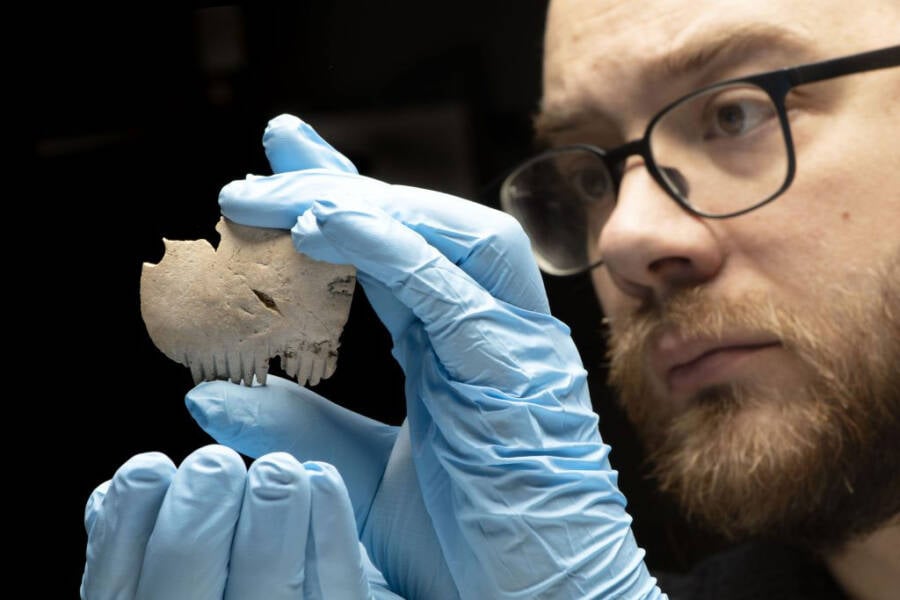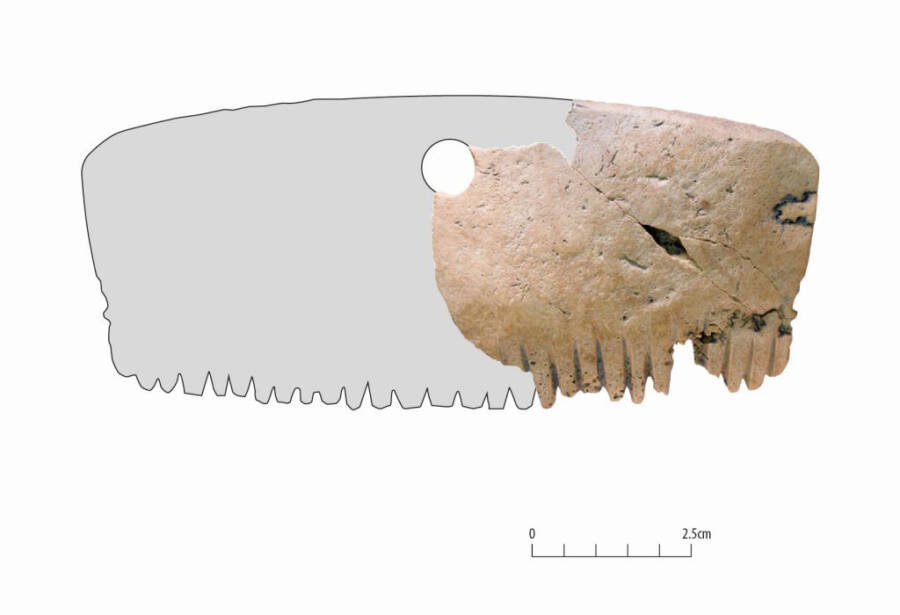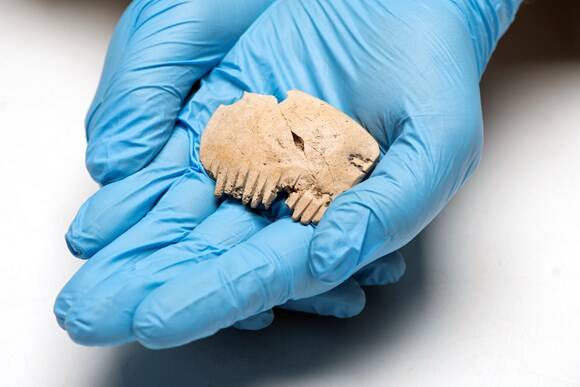Despite its appearance, the “Bar Hill comb” may have been worn as an amulet rather than used for styling hair.
MOLAMOLA find specialist Michael Marshall examines the Bar Hill comb .
archaeologist at the Museum of London Archaeology have identified a rare and unique artifact get hold at an Iron Age site at Bar Hill near Cambridgeshire , England : a 2,000 - year - old comb made from a portion of a human skull .
dub the object the “ Bar Hill cockscomb , ” archaeologists believe the breakthrough could illuminate the local customs of Iron Age humans . Only two other human bone combs have ever been found in Britain — and both of them were unearth within 15 international mile of the Bar Hill cockscomb .

MOLAMOLA Finds specialist Michael Marshall examines the Bar Hill comb.
“ It is possible this fascinating find represents a tradition carried out by Iron Age biotic community know solely in this surface area of Cambridgeshire , ” said Michael Marshall , the archaeological team lead from the Museum of London Archaeology ( MOLA ) , in astatement . “ To be able-bodied to see such hyper - local influences in groups of mass living over 2,000 years ago is truly astonishing . ”
Over the years , archaeological excavations at Iron Age land site have turn up numerous artifacts made from human bones , such as tools made from arm and branch bones . This has lead many historians to conceive that reusing human os was a moderately common ritual exercise in Iron Age Britain . coxcomb made from animal bone were also quite mutual , used for both textile workplace and hair styling .
The Bar Hill combing ’s tooth , however , did n’t show any signs of article of clothing , which could indicate that the object was symbolical rather than practical .

MOLAA reconstruction of the Bar Hill comb.
MOLAA reconstructive memory of the Bar Hill comb .
“ The Bar Hill combing may have been a highly symbolical and hefty aim for members of the local biotic community . It is possible it was carved from the skull of an authoritative member of Iron Age companionship , whose mien was in some agency preserved and commemorated through their finger cymbals , ” Marshall said .
A small cakehole bored into the side of the Bar Hill cockscomb suggests it may have been worn as an talisman . Archaeological grounds from other Iron Age situation across Europe supports this theory , showing that portions of human skulls were often collect , repurposed , and displayed .

MOLAA close-up of the Bar Hill comb.
compare the Bar Hill comb to the two similar human skull combs from Iron Age Cambridgeshire enter the doors to another opening as well . The first cockscomb , discovered at Earith in the 1970s , sport carven teeth , but the second , found in the early 2000s at Harston Mill , did not . Instead , it had incise lines , which means it likely was n’t used for any hardheaded purpose .
It ’s potential , Marshall theorized , that these carvings were mean to represent the sutures joining sections of the human skull .
“ These carved tooth and lines would have emphasised the Bar Hill comb ’s origin , at least amongst communities intimate with skeletal cadaver — as many in the Iron Age would have been . Rather than being an anonymous piece of bone , its symbolisation and significance would therefore have been immediately apparent to anyone who encountered it , ” he say .
The Bar Hill combing was come across as part of an on-going depth psychology of more than 280,000 artifacts recovered from archeological dig on the National Highways A14 Cambridge to Huntingdon Improvement Scheme between 2016 and 2018 .
MOLAA close - up of the Bar Hill comb .
The Iron Age was a pivotal moment in human history . Depending on the area , it begin sometime between 1200 B.C.E. and 600 B.C.E. as humans across Europe , Asia , and Africa begin make tools and weapon from iron and , more significantly , brand .
At the time , Europe was home to a group known as the Celts . The Celts lived in small tribe or clans , often in hill forts composed of simple round houses made of clay and forest . Gaelic community shared standardized spiritual views and speech , but they were not , on the whole , united , and they often date fight between kin group .
former Iron Age Celts also did n’t have their own written terminology , so much of what is known about their refinement come from the discovery of ancient fine art and artefact . This is also why theIron Age peat bog bodiesthat have been found across Europe are so captivating . With no indite criminal record , historians can only speculate as to why these multitude were drink down and thrown into peat bog .
But as archaeological excavations uncover more ancient artefact , our apprehension of what life story was like for Iron Age human being becomes at least a little bit unmortgaged .
The Bar Hill comb is just one example of these informative discovery .
concerned in more Iron Age discoveries ? understand all about theIron Age Celtic cleaning lady who was found entomb in a hollowed - out tree in Zurich . Or , find out about the find of anIron Age chariot immerse alongside its horse and driver in England .